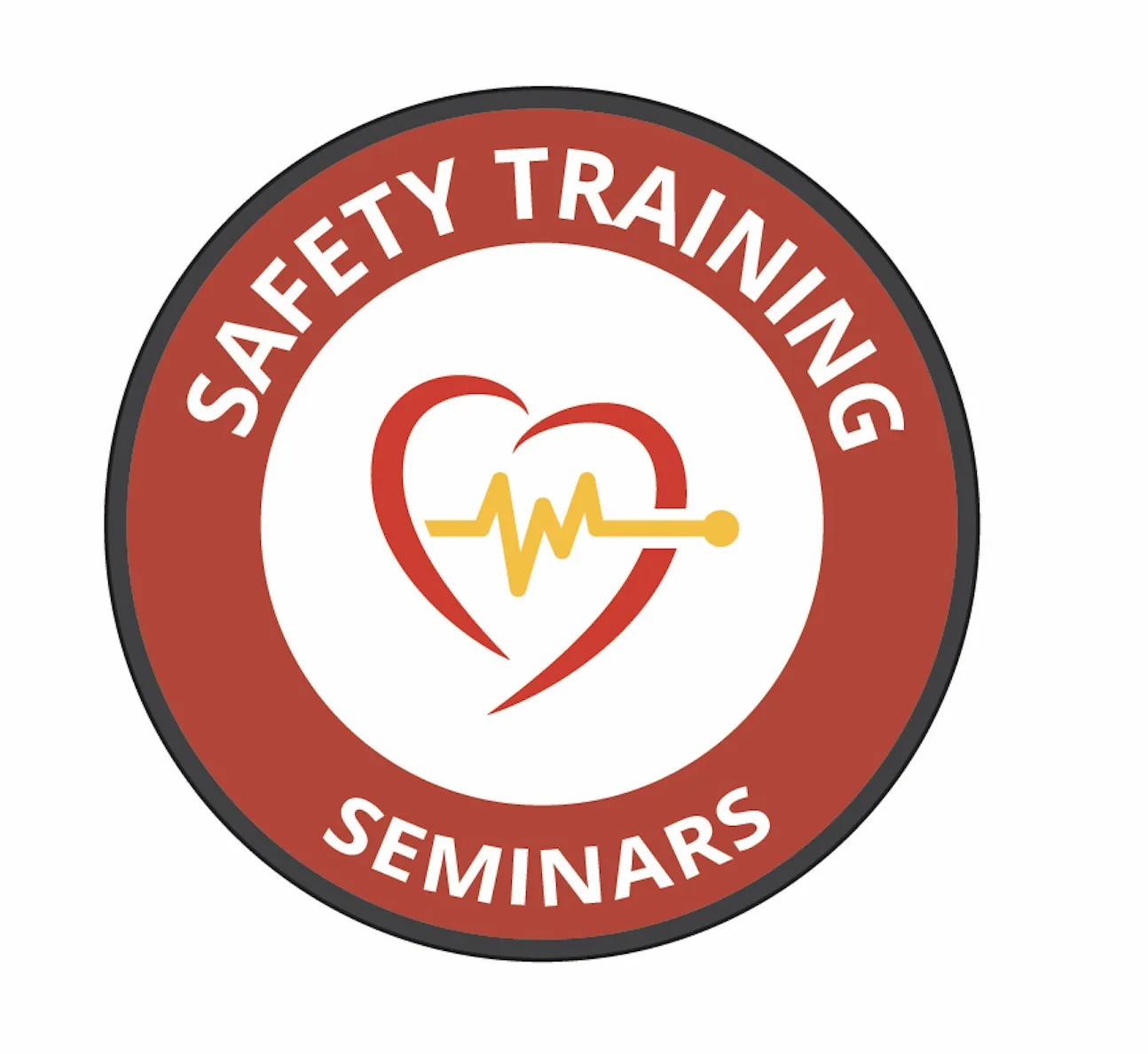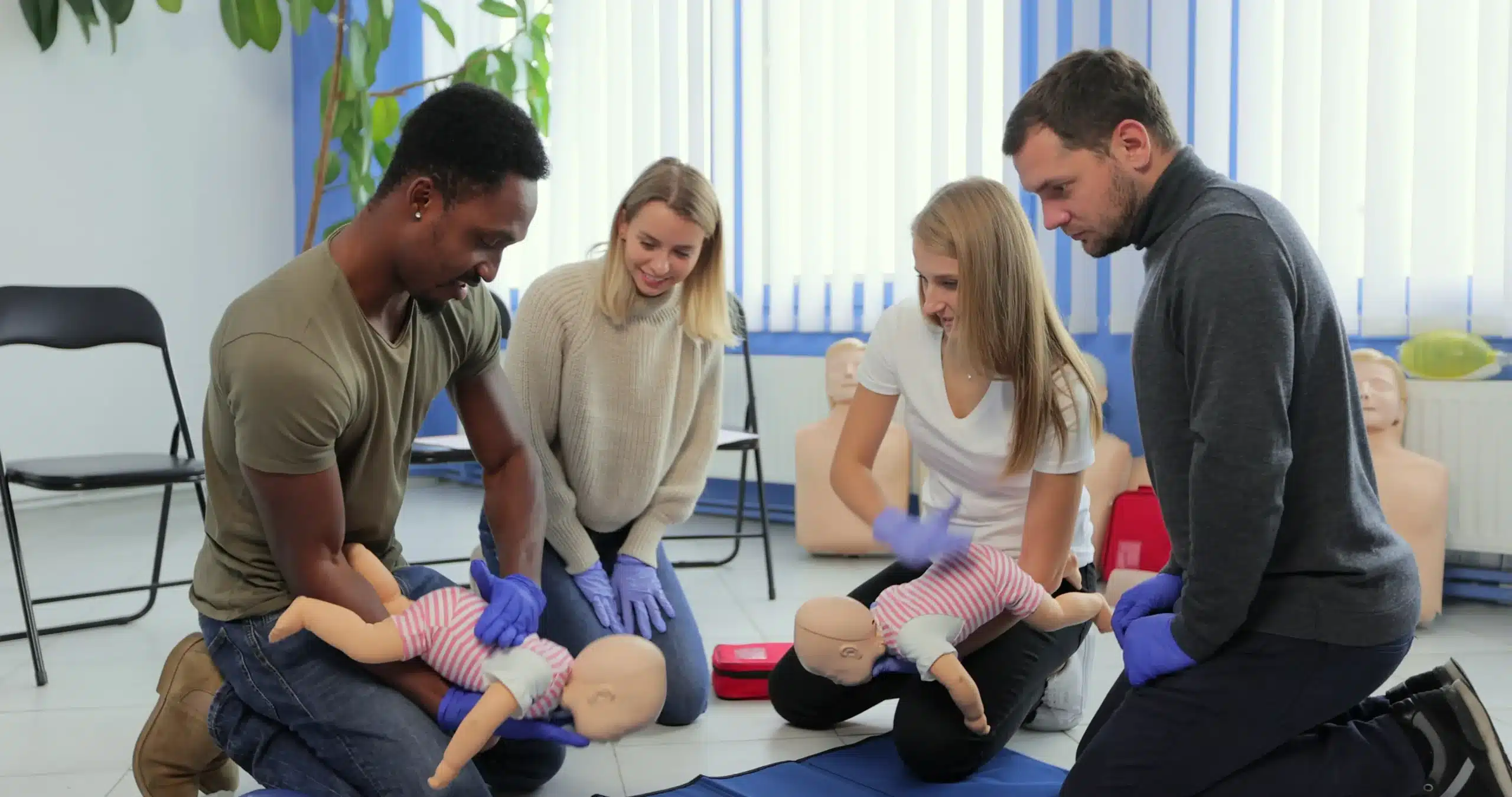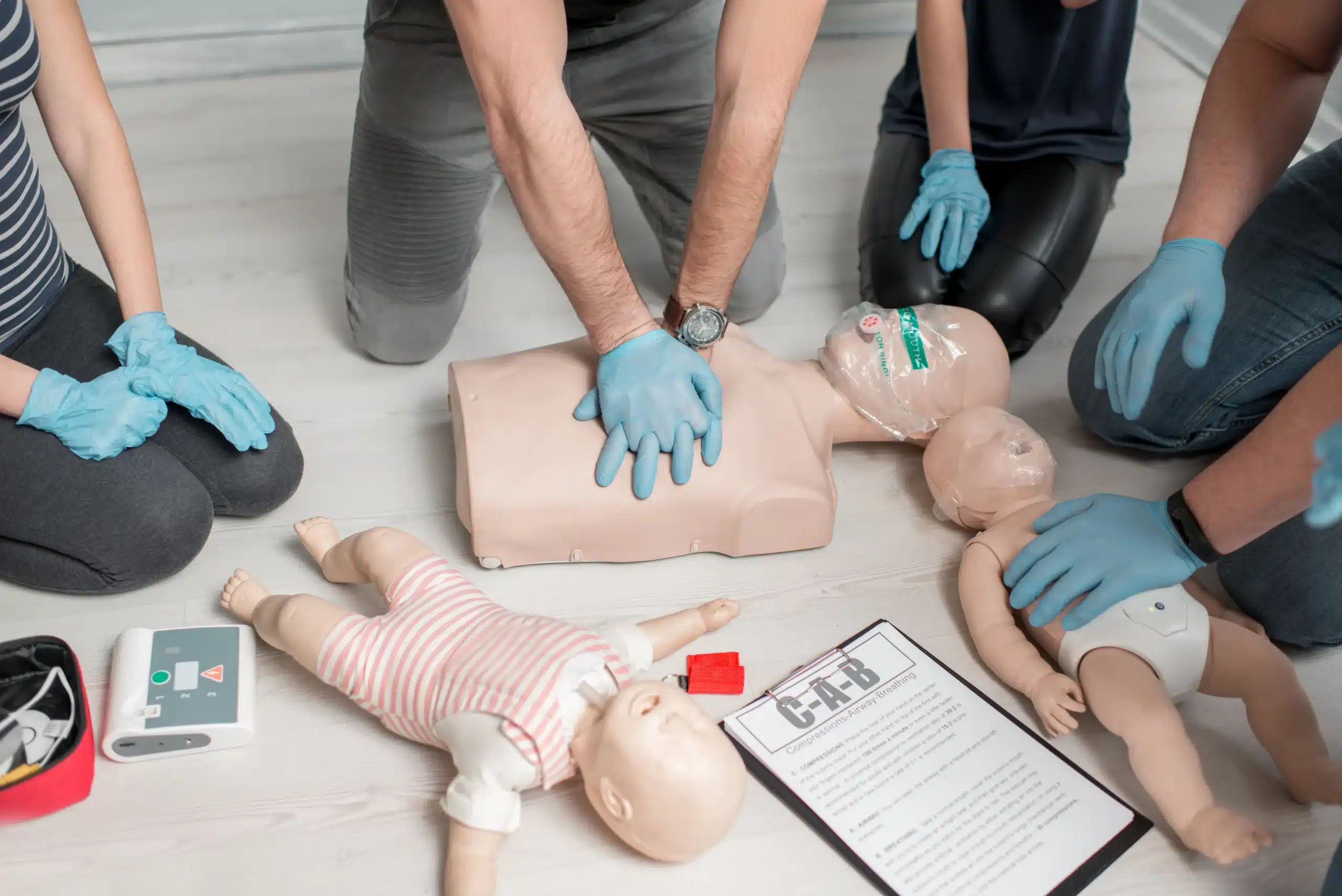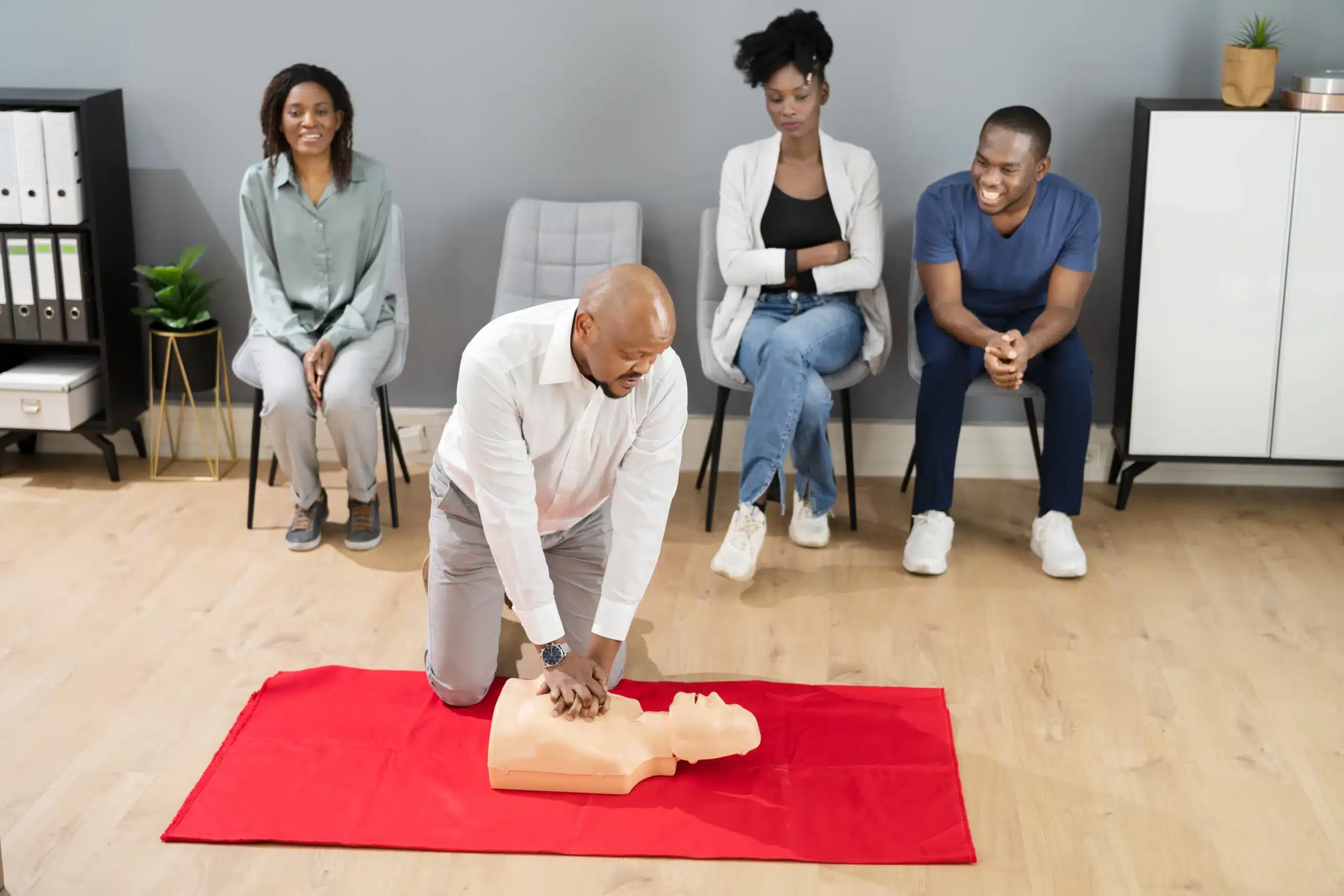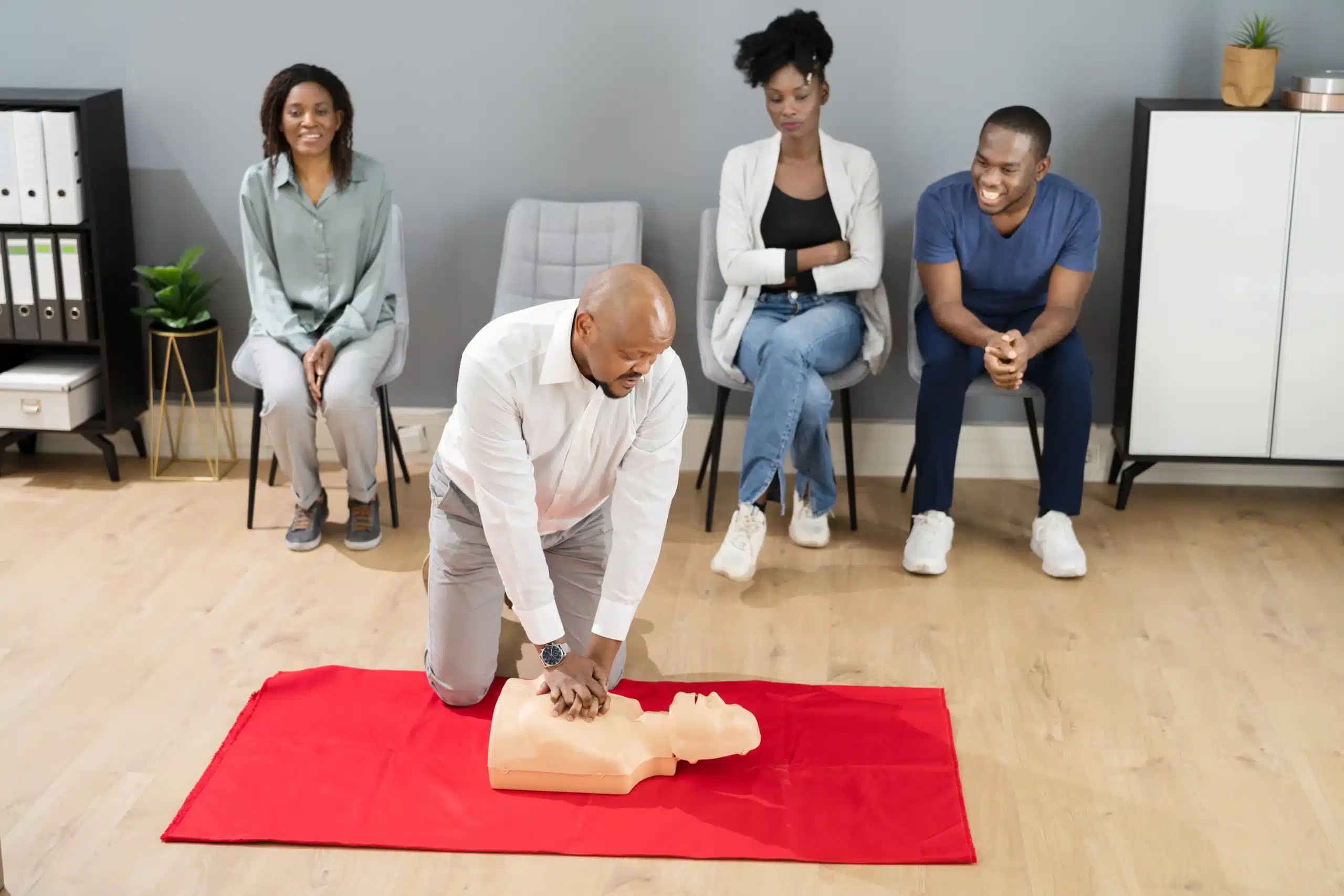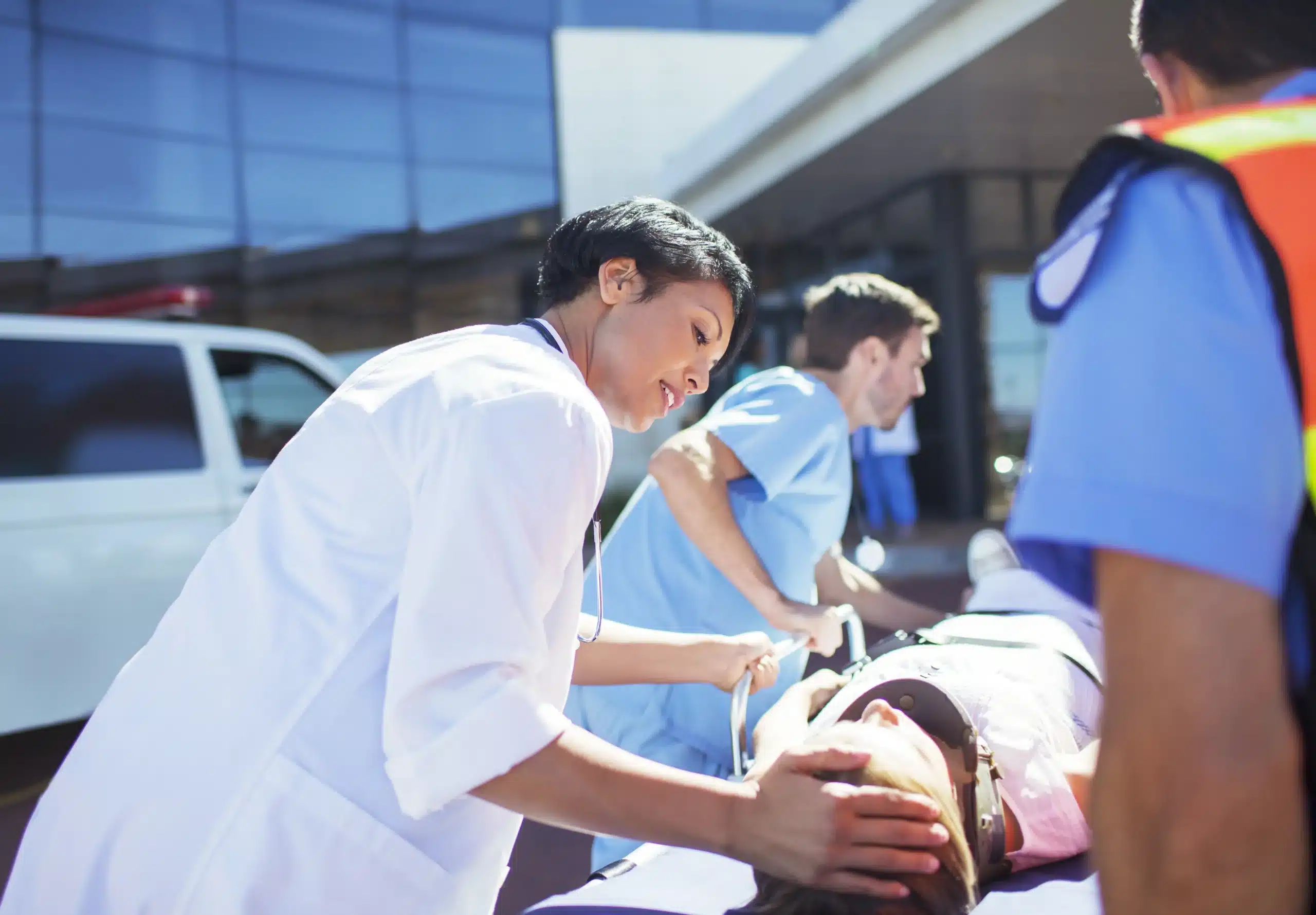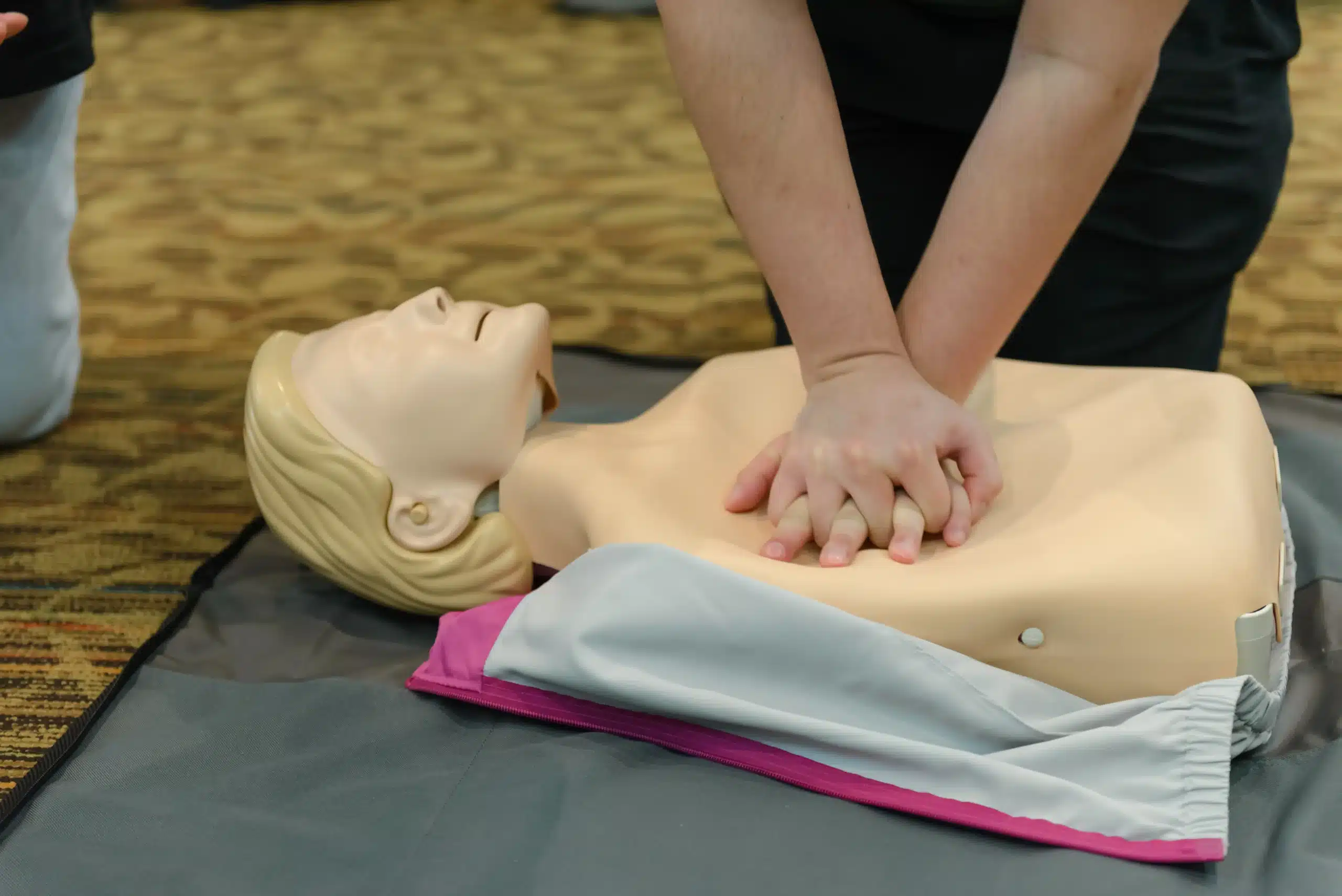Providing compassionate care for seniors in San Francisco involves being prepared for any situation, especially medical emergencies. CPR for senior caregivers in San Francisco is a critical skill that can significantly impact a senior’s well-being. This guide explores the importance of CPR certification, covering legal aspects, specific techniques for seniors, training options in San Francisco, and how to maintain your certification. We’ll also discuss ethical considerations, common emergency scenarios, and the importance of having a well-defined emergency action plan. Empower yourself with the knowledge and skills to provide exceptional care and ensure the safety of your senior clients.
Key Takeaways
- CPR is Essential for Senior Care: It equips caregivers with the skills to respond effectively to cardiac events and other medical emergencies common among older adults. Adapting CPR techniques for seniors is crucial for safe and effective care.
- Choose the Right CPR Training: Select a course from a recognized provider like the American Heart Association or the American Red Cross. Consider in-person, online, or blended learning formats based on your learning style and schedule.
- Maintain Your Skills: Regular practice and renewal are vital for maintaining proficiency. Seek out refresher courses and resources to stay up-to-date on the latest techniques and best practices for senior care.
Why Senior Caregivers in San Francisco Need CPR Certification
As a caregiver in San Francisco, you play a vital role in the well-being of our senior community. Providing compassionate care often involves handling unexpected health emergencies. CPR certification equips you with the skills and confidence to respond effectively. Let’s explore why it’s essential for senior caregivers in San Francisco.
Legal Requirements & Liability
In San Francisco, many senior care agencies require CPR certification for their caregivers. This is often a legal necessity, ensuring caregivers meet specific standards of care. Being certified demonstrates your professionalism and commitment to senior safety. It also protects you from potential liability in the event of a medical emergency. By having the training to respond appropriately, you’re better prepared to handle critical situations and potentially mitigate legal risks. Organizations like the American Red Cross offer CPR certification courses that meet workplace and regulatory requirements, including OSHA standards.
Improve Senior Safety & Care
CPR certification is more than a legal requirement—it’s a crucial skill that can significantly improve senior safety and the quality of care you provide. Seniors are more susceptible to cardiac events, and knowing how to perform CPR can dramatically increase their chances of survival. Immediate action by a trained caregiver can double or even triple survival rates, especially in those critical minutes before paramedics arrive. Understanding how to adapt CPR techniques for elderly patients, considering age-related changes like osteoporosis, is also essential. Having this training not only equips you with life-saving skills but also enhances your professional standing and offers peace of mind for both you and the families you serve. It reinforces your dedication to providing the highest level of care and builds trust within the caregiving relationship.
CPR Techniques for Elderly Patients
As a caregiver for a senior in San Francisco, understanding the nuances of CPR for older adults is crucial. While the basic principles remain the same, age-related physiological changes require specific adaptations to ensure effective and safe intervention.
Adapt CPR for Age-Related Changes
Elderly patients often have conditions like osteoporosis, which makes their bones more fragile. This requires a gentler approach during chest compressions. However, don’t hold back entirely—providing adequate depth is crucial for effective blood circulation. It’s about finding the right balance between delivering effective compressions and minimizing the risk of injury. Learn more about adapting CPR for the elderly.
Address Common Health Conditions
Many elderly individuals in San Francisco live with underlying health conditions like cancer or chronic diseases. These conditions can significantly impact the success rate of CPR. It’s essential to be aware of an individual’s health status and how it might affect the outcome. While CPR can be life-saving, it’s also important to have realistic expectations and understand the potential risks. Consider the risks and complications of CPR for seniors.
Overcome Physical Challenges
Performing CPR on an elderly patient can present physical challenges for caregivers. Their smaller frame and potential mobility restrictions may require you to adjust your positioning and technique. While performing CPR on seniors is safe when necessary, understanding the potential risks associated with age-related fragility is important. Learn about the safety of performing CPR on seniors. Your swift action and knowledge of adapted CPR techniques can significantly improve their chances of survival.
CPR Training Options for San Francisco Caregivers
As a caregiver in San Francisco, deciding on the right CPR training can feel overwhelming. Let’s break down the options to help you find the perfect fit for your needs and schedule.
In-Person, Online, & Blended Learning
You have several options when it comes to CPR training: in-person, online, and blended learning. In-person CPR classes offer hands-on practice and direct interaction with an instructor, often the preferred method for those who learn best in a traditional classroom setting. Online CPR courses provide flexibility, allowing you to learn at your own pace from anywhere with an internet connection. Blended learning combines the best of both worlds, offering online instruction supplemented by in-person skills sessions. Consider your learning style and available time when making your decision.
Choose the Right Course
Selecting a CPR course from a recognized provider is crucial. Look for certification from reputable organizations like the American Heart Association (AHA) or the American Red Cross. Think about factors like cost, the class schedule, and the course format (in-person, online, or blended) to find a course that aligns with your needs. Check if the course covers CPR techniques for seniors, as this will be especially relevant to your role as a caregiver.
Bay Area CPR’s Specialized Senior Caregiver Courses
Bay Area CPR offers a variety of AHA-certified courses, including BLS, ACLS, PALS, and Wilderness First Aid. With flexible scheduling and various locations across the Bay Area—including San Francisco, Daly City, San Mateo, and Oakland—finding a class that fits your schedule is easy. These courses equip you with the skills and confidence to handle emergencies involving seniors.
Master Senior-Focused CPR
Recognize Cardiac Emergencies in Older Adults
It’s vital for caregivers to quickly recognize the signs of cardiac emergencies in seniors. While some symptoms, like chest pain, are obvious, others can be more subtle. Older adults experiencing a cardiac event might exhibit shortness of breath, nausea, lightheadedness, or even a general feeling of weakness. Sometimes, seniors don’t experience any chest pain at all during a heart attack. Knowing these less common signs can make all the difference in getting timely medical help. Early intervention dramatically increases the chances of survival, especially since the survival rate with CPR is less than 5% for chronically ill elderly.
Perform Chest Compressions on Seniors
CPR for seniors requires specific adjustments due to age-related physical changes. The chest might be more fragile, so hand placement and the force of compressions need careful consideration. Don’t hold back out of fear of causing injury—effective compressions are crucial for circulating blood. During your CPR training, practice proper techniques on mannequins designed to simulate the physiology of an older adult. This hands-on experience will build your confidence and prepare you to respond effectively in a real emergency.
Use AEDs Safely on Elderly Patients
Automated External Defibrillators (AEDs) are essential tools in cardiac emergencies. Using an AED on a senior follows the same basic steps as using one on a younger person. However, you should be aware of certain precautions. For example, ensure the pads are placed correctly, avoiding any implanted medical devices like pacemakers. Also, be mindful of potential skin tears when removing the pads, especially if the senior has fragile skin. CPR training will cover the safe and effective use of AEDs on people of all ages, giving you the skills to act quickly and confidently.
Address Unique Challenges in Senior CPR
Working with elderly patients presents unique challenges, especially during emergencies. This section addresses how to manage communication barriers, minimize injury risks, and develop effective emergency action plans.
Manage Communication Barriers & Emotional Stress
Caring for seniors often involves navigating communication difficulties and heightened emotional stress, especially during a medical crisis. Many seniors experience hearing loss or cognitive impairment, making it difficult for them to understand instructions or express their needs. Approach these situations with patience and empathy. Use clear, simple language, and be prepared to repeat yourself. If possible, involve family members who can help communicate and provide emotional support. Remember, providing CPR can be emotionally taxing, so take care of your own well-being. Debriefing after an incident can be helpful for processing the experience.
Minimize Injury Risk During CPR
CPR on seniors requires adapting techniques to account for age-related physical changes. Older adults often have more fragile bones and thinner skin, increasing their risk of injury during chest compressions. Adjust hand placement and compression depth as needed. Be mindful of the potential for rib fractures and other injuries. While CPR is crucial in emergencies, performing it carefully to minimize potential harm is essential. Understanding the individual’s underlying health conditions can also inform your approach to CPR. For those with chronic illnesses, CPR outcomes can vary.
Develop Senior Care Emergency Action Plans
Having a well-defined emergency action plan is crucial for senior care. This plan should include contact information for family members, physicians, and emergency services. Outline specific procedures for different emergencies, including cardiac arrest, strokes, and falls. Consider the individual’s medical history and preferences when developing the plan. Discuss the plan with everyone involved in the senior’s care, including family, medical professionals, and other caregivers, to ensure everyone is prepared and can act quickly and effectively in a crisis. Early intervention can significantly improve outcomes in medical emergencies.
Maintain & Renew Your CPR Certification
CPR certification is invaluable, but only if your skills are current. Knowing what to do in a crisis builds confidence and could save a life. Keeping your CPR skills sharp is essential for any caregiver, especially when caring for seniors.
San Francisco Renewal Requirements
CPR certifications are typically valid for two years. Plan to renew your CPR certification regularly to stay compliant and maintain your skills. In San Francisco, the cost of basic CPR certification ranges from $75 to $150. Knowing this helps you budget for your ongoing training.
Keep Your CPR Skills Sharp
Regular practice is key to responding effectively in an emergency. Think of it like any other skill—consistent practice builds muscle memory and reinforces the steps to take during a critical moment.
Practice & Refresher Courses
Look for refresher courses and practice opportunities to keep your skills up-to-date. Bay Area CPR offers a variety of courses and resources to help you maintain your proficiency. Consider factors like cost, schedule, and course format (in-person, online, or blended) when choosing a CPR class. Finding a course that fits your learning style and schedule makes it easier to stay on top of your training. A reputable provider like Bay Area CPR offers high-quality instruction and ensures you meet the American Heart Association certification requirements.
Legal & Ethical Responsibilities of Certified Caregivers
As a caregiver in San Francisco, you know providing quality care involves more than just daily tasks. It also means being prepared for emergencies and understanding your responsibilities, both legally and ethically. This knowledge ensures you can act quickly and confidently when it matters most.
California Caregiver Certification Regulations
CPR certification is often a legal requirement for many home caregivers in San Francisco, as agencies recognize its importance. This certification equips caregivers to handle emergencies like cardiac arrest or choking effectively until paramedics arrive. Being certified demonstrates your commitment to providing a safe environment and meeting the legal expectations of your role.
Ethical Duties in Emergencies
Beyond legal requirements, CPR certification carries significant ethical weight. As a caregiver, you’re entrusted with the well-being of vulnerable individuals, often seniors. CPR becomes crucial in cardiac arrest situations, especially with age-related health changes impacting how you administer it. Your ability to assess responsiveness patiently and react swiftly can significantly impact their outcome.
Communicate Effectively with Family & Healthcare Providers
Clear communication is a cornerstone of ethical caregiving. Families rely on you to keep them informed, and healthcare providers need accurate information to make sound decisions. Highlighting your CPR certification on your caregiver profile builds trust and assures everyone involved that you’re prepared for emergencies. This transparency strengthens the caregiver-family-healthcare provider relationship, creating a collaborative approach to senior care.
Common Senior Care CPR Scenarios
As a caregiver, you’re likely to encounter various emergencies. Understanding how these situations manifest in seniors and how they relate to CPR is crucial for providing effective care.
Cardiac Arrest & Heart Attacks
Cardiac arrest and heart attacks are serious medical emergencies that can occur in seniors. While both involve the heart, they are distinct conditions. A heart attack happens when blood flow to the heart is blocked, while cardiac arrest occurs when the heart suddenly stops beating. CPR is a critical intervention in cases of cardiac arrest, as it helps circulate oxygenated blood to the brain and other vital organs. However, it’s important to be aware that the survival rate with CPR for seniors is generally lower than for younger adults. Underlying health conditions can further impact the success rate. Some studies show chronically ill elderly patients have a less than 5% chance of surviving cardiac arrest after receiving CPR.
Respiratory Distress & Choking
Respiratory distress and choking are also common emergencies in senior care. Respiratory distress can stem from various factors, including pneumonia, asthma, and heart failure. Choking can occur when food or other objects become lodged in the airway. In either situation, if the senior becomes unresponsive and stops breathing, CPR is necessary. Seniors may have weaker bones and other age-related physical changes. Adapting CPR techniques for older patients involves careful consideration of hand placement and the force used during chest compressions to avoid causing injuries.
Falls & Related Emergencies
Falls are a significant concern for seniors, often leading to injuries like fractures or head trauma. While not all falls require CPR, some can result in loss of consciousness and stopped breathing. In such cases, CPR should be initiated immediately. It’s important to consider the potential long-term effects of CPR on elderly patients, including broken ribs and other complications. Ideally, discuss CPR and resuscitation preferences with the senior and their family beforehand, taking into account their wishes and quality of life considerations.
San Francisco CPR Training & Certification Resources
Finding the right CPR training and certification program is crucial for senior caregivers. Luckily, San Francisco offers a variety of options to fit your schedule and learning style. Here’s a look at some local training centers and online resources to help you get started.
Local Training Centers & Organizations
Several reputable organizations in San Francisco provide in-person CPR certification courses. Safety Training Seminars offers American Heart Association-certified courses, including BLS, ACLS, and PALS. For those seeking a range of courses and flexible scheduling, Bay Area CPR offers various AHA-certified courses, including BLS, ACLS, PALS, and Wilderness First Aid. With locations across the Bay Area, including San Francisco, Daly City, San Mateo, and Oakland, finding a convenient class is easy. The American Red Cross also provides CPR and First Aid training in San Francisco.
Online Resources for Continued Learning
Supplementing your in-person training with online resources can reinforce your skills and knowledge. Websites like CPR Certification San Francisco offer a range of online CPR and BLS courses suitable for healthcare professionals and the general public. For senior caregivers specifically, researching reputable certifying organizations for senior caregiver programs is a great first step. These online resources can help you stay up-to-date on the latest CPR techniques and best practices for senior care.
Frequently Asked Questions
Is CPR certification legally required for all caregivers in San Francisco?
While CPR certification isn’t mandatory for all caregivers in San Francisco, many agencies require it. Check with your employer or the agency you work for to confirm their specific requirements. Even if it’s not legally required, having CPR certification demonstrates your commitment to safety and professionalism, which can be beneficial for your career.
What are the key differences between performing CPR on seniors versus younger individuals?
Seniors often have age-related conditions like osteoporosis, making their bones more fragile. This requires adjusting the force of chest compressions during CPR. It’s a balance between providing effective compressions and minimizing the risk of injury. Also, be aware of underlying health conditions that might influence how you perform CPR.
What are the most common emergencies I might encounter as a senior caregiver, and how does CPR relate to them?
Common emergencies include cardiac arrest, heart attacks, respiratory distress, choking, and falls. CPR is crucial in situations where a senior becomes unresponsive and stops breathing, such as cardiac arrest or choking. While CPR may not be directly applicable in every emergency, understanding how to assess the situation and provide appropriate first aid is essential.
How can I maintain my CPR skills and stay up-to-date with the latest techniques after becoming certified?
Regular practice and refresher courses are key to maintaining your CPR skills. Many organizations offer renewal courses and practice sessions. Online resources can also help you stay informed about the latest guidelines and techniques. Consistent practice builds confidence and ensures you’re prepared to act effectively in a real emergency.
What are the ethical considerations surrounding CPR and senior care, especially regarding communication with family members?
Open communication with family members about a senior’s health status and emergency preparedness is crucial. Discuss CPR and end-of-life wishes with the family and the senior, if possible, to ensure everyone is on the same page. This includes having a clear emergency action plan and being transparent about your CPR certification and capabilities. Ethical caregiving involves respecting the senior’s wishes and providing the best possible care while keeping the family informed.
